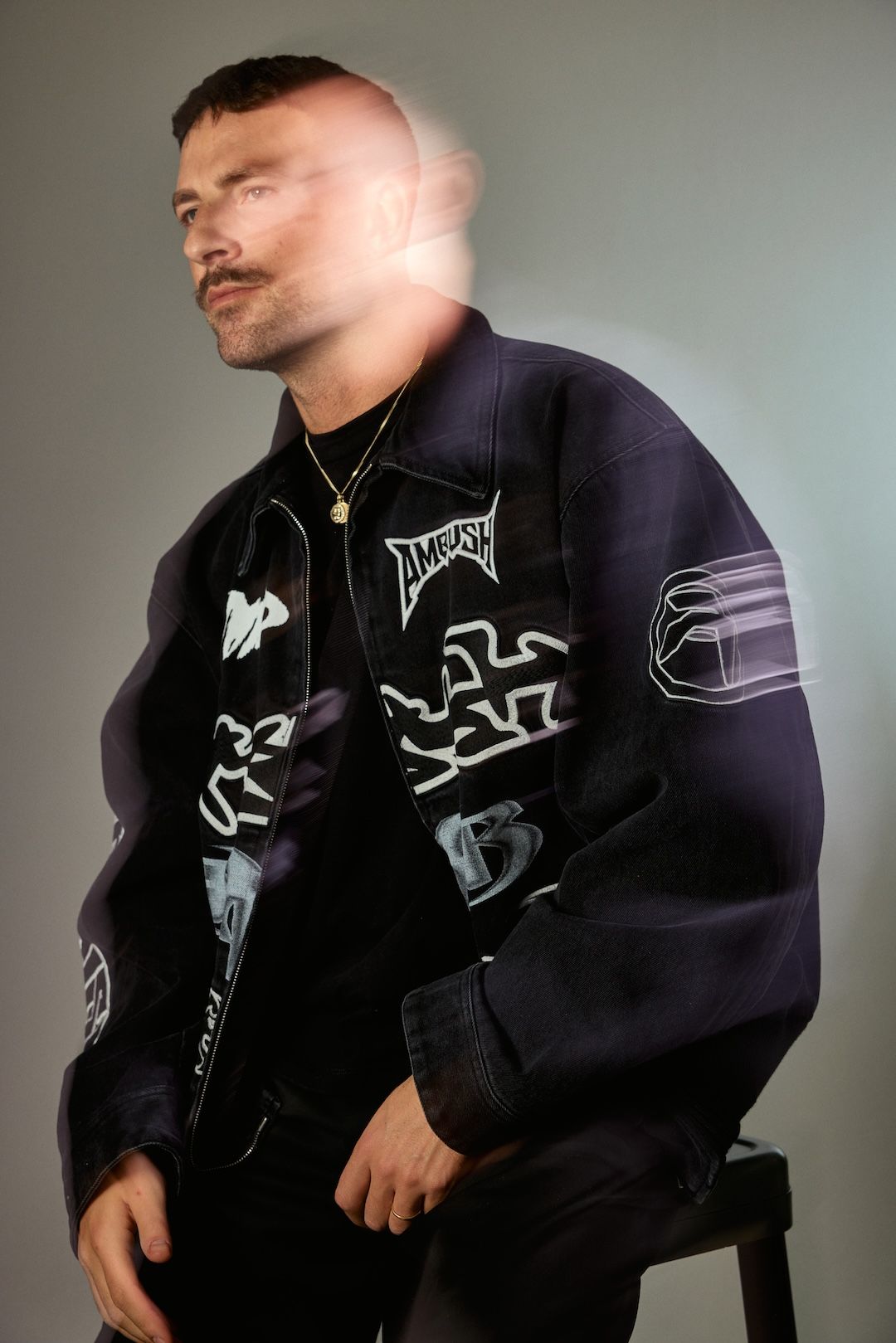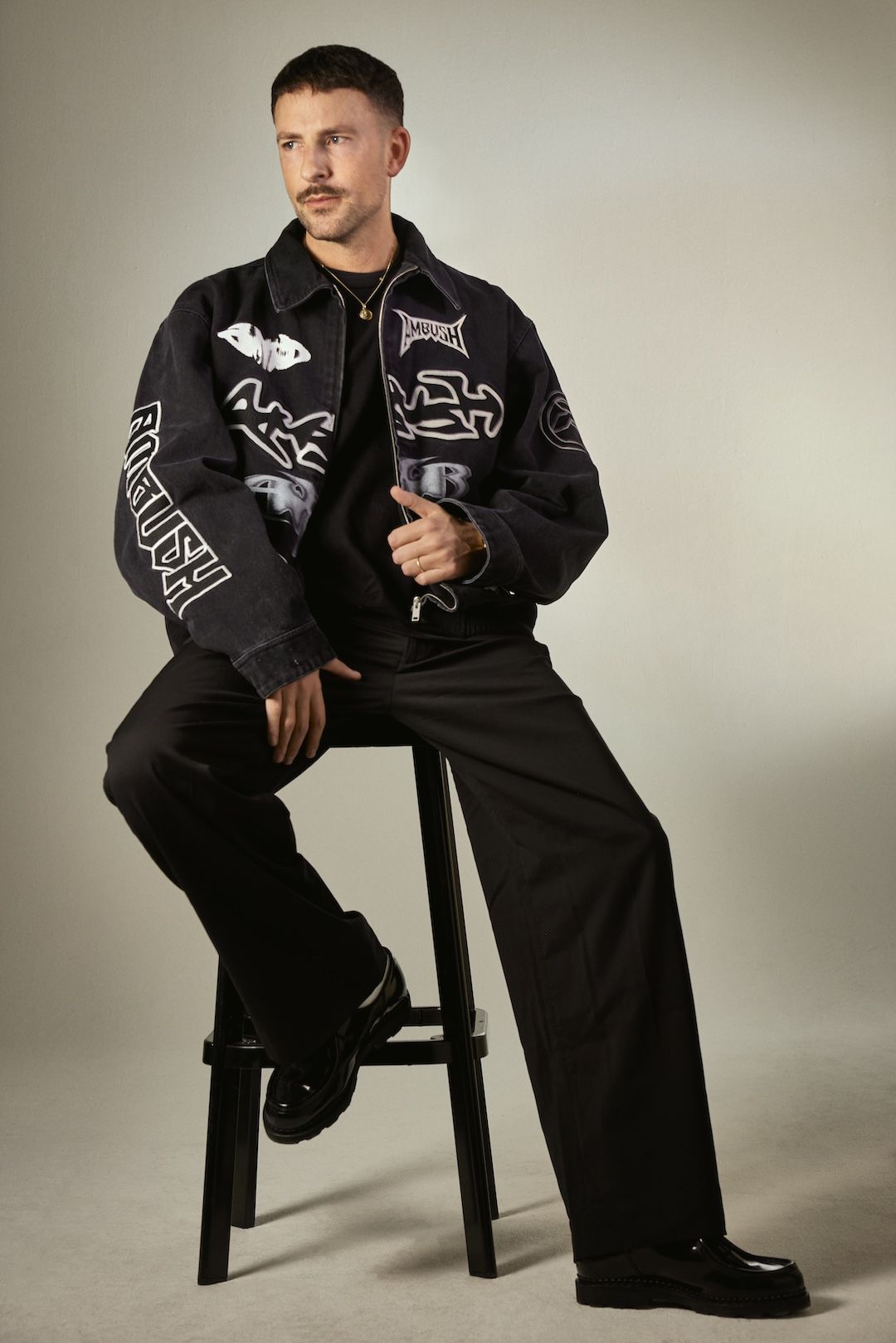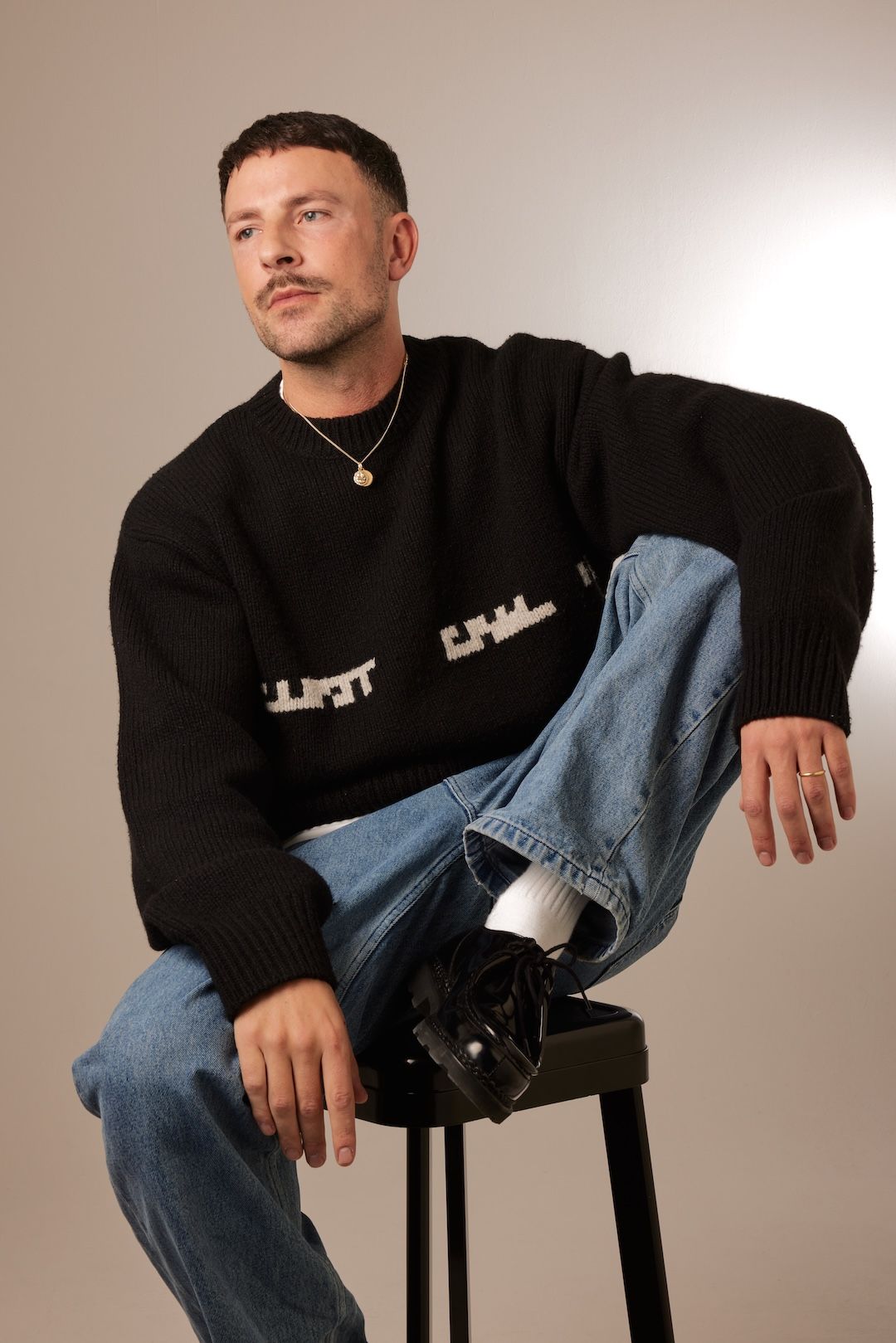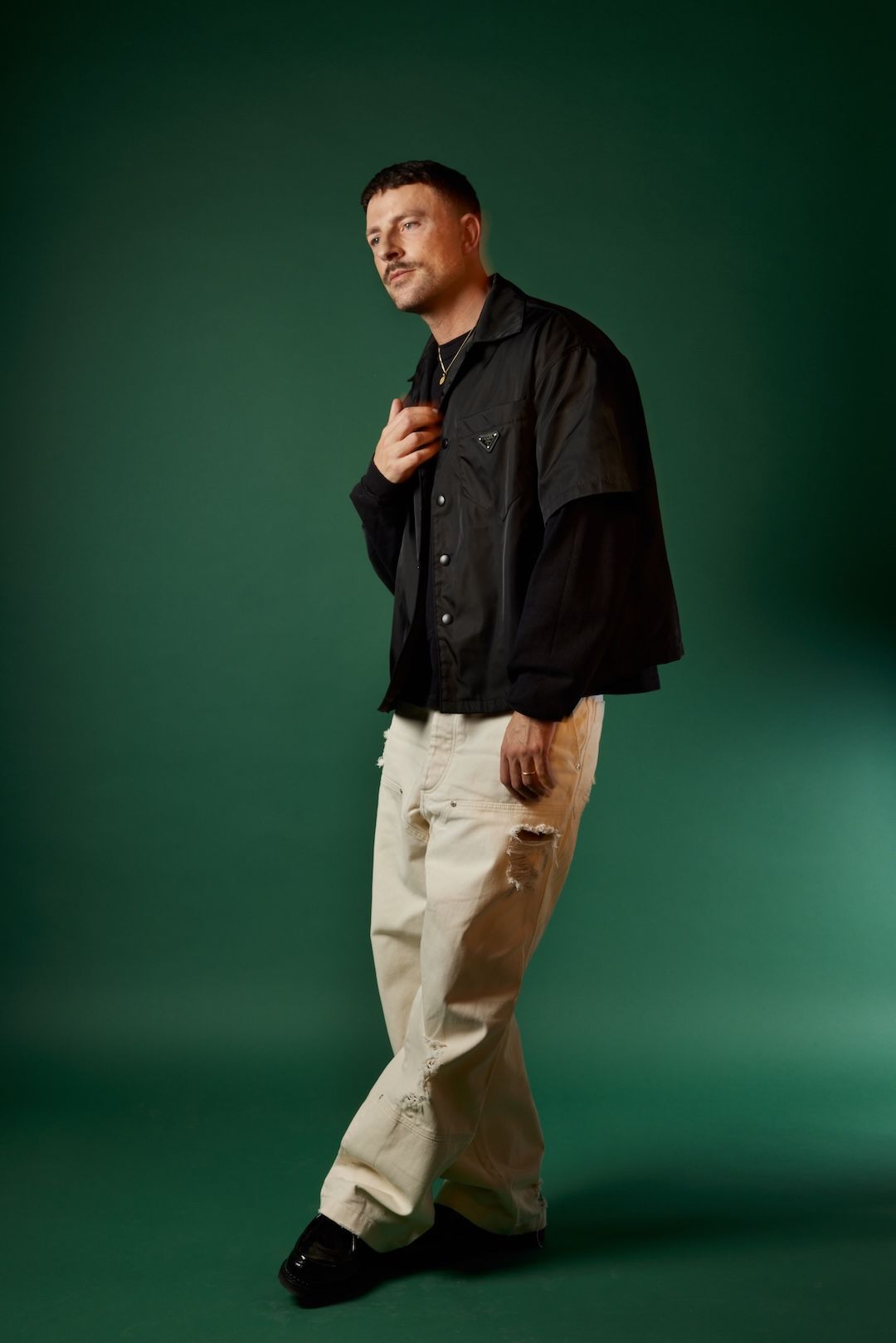In conversation w/ Shlømo
JUNE 9, 2025 → WORDS SARA NAVARRO
With over a decade at the forefront of the global techno scene, Shlømo has built a name synonymous with sonic innovation, raw emotion, and an unshakeable sense of authenticity. From launching his label Taapion to pioneering the genre-defying sounds of Viper Diva, his impact stretches far beyond the booth. In recent years, he’s taken that vision even further, curating his own event series Welcome Back Devil, returning with the explosive track I’m Not Done Yet, and now, stepping into the world of unfiltered conversation with HEADSHOT, a podcast that strips back the façade and dives deep into the realities of rave culture. We sat down with Shlømo to talk about the motivations behind this new venture, how he sees the future of techno, and what it really means to be “in hell but together”.


What sparked the idea for HEADSHOT, and what made you want to create a platform for raw, unfiltered conversations in the techno scene?
I think it was necessary—it was a need I’d felt over the years. You can already see it in other genres like hip-hop, and today, with social media and media in general, it allows artists to show a more personal side. I’d had the idea in mind for about a year, and I took the time to find the right partner—someone who could bring the right balance, someone with both the artist and crowd perspective as an interviewer. Urban Le Pharaon was the perfect co-host, both for what he represents in the French techno scene and because of our friendship. Finally, I thought it was important for the audience to see behind the scenes, to be more in touch with the reality of this world.
How do you choose your guests? Is there a particular energy or story you’re drawn to when inviting someone on? And are there any exciting upcoming guests we should keep an eye out for, or dream guests you’d love to have on the show one day?
The advantage of being an established artist in the scene for years is that it’s easier to invite artists I’ve toured with and know personally. The artist’s story and career content are, of course, the starting point for selecting guests, and my whole team and I work ahead of time on the topics we’ll discuss. Even though we leave a lot of room for the spontaneity of conversation, there’s a lot of prep work behind it. As for upcoming guests, we can already announce Alignment and CARV, with more exciting guests coming up for the season one finale. And my dream guest would be Aphex Twin—I’m a huge fan.
You’ve moved beyond “Daddy Vibes” into this more evolved energy of being “The Daddiest”, can you break down what that means to you now, both as a performer and in the way you connect with your crowd? And how do you use the idea of “in hell but together” to shape the emotional core of your music and events?
Fun fact: the term “Daddiest” was actually given to me by my good friend Sara Landry through a meme she once sent me, and it just stuck! The “Daddy” nickname grew over time because of how long I’ve been around in the scene, and I fully embrace it now. “In hell but together” is more like the motto of my WBD nights. There’s something romantic about losing and finding yourself again in the rave. That’s what the slogan is about—no matter what happens, if we’re together, that’s what really matters, wherever we are.
How has your relationship with performance changed over the years, especially as your shows have scaled up globally? Do you feel the dancefloor has changed in how it receives or interacts with techno since you first started out?
I come from a Berghain generation, where showing emotion on stage wasn’t really the thing—you had to stay as still and neutral as possible. But the rise of social media has allowed us, as artists, to loosen up and connect more with the crowd. It’s been a slower process for me because I’m naturally a shy person, but I’ve grown into it over time.
Your project “Welcome Back Devil” has grown from a track to a global event series. Did you always envision it as something bigger, or did it naturally evolve into this movement? What sets a WBD night apart from your other sets or tours? Is there a distinct energy or creative direction you channel there?
WBD came to life when I wanted to start throwing my own parties, and the name just felt like the essence of rave itself. I think the WBD event in Paris in May 2024—seen by many as one of the best raves in Paris in the past 10 years—really put the brand on the map. It helped build a strong core community that got the message behind these parties and embraced the project. What makes WBD nights different is that everything is imagined and designed by me from A to Z. It’s my full vision of rave. Get ready for the next one on October 17—it’ll be the biggest WBD project yet.


You’ve built some seriously high-impact lineups under the WBD banner. What’s the process behind curating those, do you approach it with a specific storyline or vibe in mind?
My lineups are mainly made up of close friends and people I’m tight with in the scene. That way, there’s a real sense of family energy throughout the night—and the crowd can feel it too.
How do you imagine the future of techno, especially with the internet, podcasts, and content now being part of the culture?
I think techno will become even more integrated into pop culture than it already is and will settle in as a movement that’s accessible to everyone—not just a niche thing.
I see that as a good thing. Just like hip-hop artists, techno artists will gradually become opinion leaders. It’s on us, the artists, to promote the right values and the true philosophy of this movement.
As a label head, how do you balance your own artistic vision with nurturing new talent? What draws you to sign or support an artist?
Over the years, I’ve made it a priority to give young artists a platform—so much so that I created a special “Fresh Blood” release category on my label. I was one of the first to start asking for unreleased tracks from young producers, posting stories to encourage them to send me their music—this was around 2019. It was important to me to give young producers a real shot. I feel it’s a responsibility for established artists to offer that kind of opportunity—especially knowing how hard it used to be to get help from bigger names when I was coming up.
Do you ever use the label as a playground to test ideas that might not “fit” the mainstream club circuit, things that feel more raw, emotional, or genre-defying?
Yeah, definitely! For example, at the beginning of 2021 I decided to release DJ TRAYTEX’s “Run From This World”. It didn’t fit the label’s usual sound at all, but I absolutely wanted to put it out. It’s a very emotional track, with vocals and guitar, and it was fast for its time. But I didn’t want to set limits—I trusted my gut. I followed my heart.
Can you name 3 upcoming tracks you’re especially excited about, either your own or from your label, and let us know when they’re dropping?
The 3 upcoming tracks you should know about are:
→ “DALE DURO” by DJ Guestlist, out on 30.05 on TAAPION
→ “LIGHTS UP” by Junkie Kid & Shlømo, out on 06.06 on TAAPION
→ A collaboration track between KXCHR & Shlømo - during the summer!
You’ve built your own label, launched a podcast, collaborated on Viper Diva, what’s still on the bucket list for you?
Honestly, I’m not thinking in terms of a bucket list right now. I try to approach each project with the mindset of contributing something meaningful to this scene.
If HEADSHOT could evolve into anything, a festival, a label, a documentary, what would be the dream?
A documentary feels like the natural next step, ideally with a media outlet that understands and respects techno culture without stereotyping it. I think techno, like every other genre, still suffers from clichés. So, I’d love to create a documentary that allows me to speak about the culture and my experience—without reducing it to tired stereotypes.
In conversation w/ Shlømo
JUNE 9, 2025
WORDS SARA NAVARRO

With over a decade at the forefront of the global techno scene, Shlømo has built a name synonymous with sonic innovation, raw emotion, and an unshakeable sense of authenticity. From launching his label Taapion to pioneering the genre-defying sounds of Viper Diva, his impact stretches far beyond the booth. In recent years, he’s taken that vision even further, curating his own event series Welcome Back Devil, returning with the explosive track I’m Not Done Yet, and now, stepping into the world of unfiltered conversation with HEADSHOT, a podcast that strips back the façade and dives deep into the realities of rave culture. We sat down with Shlømo to talk about the motivations behind this new venture, how he sees the future of techno, and what it really means to be “in hell but together”.

What sparked the idea for HEADSHOT, and what made you want to create a platform for raw, unfiltered conversations in the techno scene?
I think it was necessary—it was a need I’d felt over the years. You can already see it in other genres like hip-hop, and today, with social media and media in general, it allows artists to show a more personal side. I’d had the idea in mind for about a year, and I took the time to find the right partner—someone who could bring the right balance, someone with both the artist and crowd perspective as an interviewer. Urban Le Pharaon was the perfect co-host, both for what he represents in the French techno scene and because of our friendship. Finally, I thought it was important for the audience to see behind the scenes, to be more in touch with the reality of this world.
How do you choose your guests? Is there a particular energy or story you’re drawn to when inviting someone on? And are there any exciting upcoming guests we should keep an eye out for, or dream guests you’d love to have on the show one day?
The advantage of being an established artist in the scene for years is that it’s easier to invite artists I’ve toured with and know personally. The artist’s story and career content are, of course, the starting point for selecting guests, and my whole team and I work ahead of time on the topics we’ll discuss. Even though we leave a lot of room for the spontaneity of conversation, there’s a lot of prep work behind it. As for upcoming guests, we can already announce Alignment and CARV, with more exciting guests coming up for the season one finale. And my dream guest would be Aphex Twin—I’m a huge fan.
You’ve moved beyond “Daddy Vibes” into this more evolved energy of being “The Daddiest”, can you break down what that means to you now, both as a performer and in the way you connect with your crowd? And how do you use the idea of “in hell but together” to shape the emotional core of your music and events?
Fun fact: the term “Daddiest” was actually given to me by my good friend Sara Landry through a meme she once sent me, and it just stuck! The “Daddy” nickname grew over time because of how long I’ve been around in the scene, and I fully embrace it now. “In hell but together” is more like the motto of my WBD nights. There’s something romantic about losing and finding yourself again in the rave. That’s what the slogan is about—no matter what happens, if we’re together, that’s what really matters, wherever we are.
How has your relationship with performance changed over the years, especially as your shows have scaled up globally? Do you feel the dancefloor has changed in how it receives or interacts with techno since you first started out?
I come from a Berghain generation, where showing emotion on stage wasn’t really the thing—you had to stay as still and neutral as possible. But the rise of social media has allowed us, as artists, to loosen up and connect more with the crowd. It’s been a slower process for me because I’m naturally a shy person, but I’ve grown into it over time.
Your project “Welcome Back Devil” has grown from a track to a global event series. Did you always envision it as something bigger, or did it naturally evolve into this movement? What sets a WBD night apart from your other sets or tours? Is there a distinct energy or creative direction you channel there?
WBD came to life when I wanted to start throwing my own parties, and the name just felt like the essence of rave itself. I think the WBD event in Paris in May 2024—seen by many as one of the best raves in Paris in the past 10 years—really put the brand on the map. It helped build a strong core community that got the message behind these parties and embraced the project. What makes WBD nights different is that everything is imagined and designed by me from A to Z. It’s my full vision of rave. Get ready for the next one on October 17—it’ll be the biggest WBD project yet.


You’ve built some seriously high-impact lineups under the WBD banner. What’s the process behind curating those, do you approach it with a specific storyline or vibe in mind?
My lineups are mainly made up of close friends and people I’m tight with in the scene. That way, there’s a real sense of family energy throughout the night—and the crowd can feel it too.
How do you imagine the future of techno, especially with the internet, podcasts, and content now being part of the culture?
I think techno will become even more integrated into pop culture than it already is and will settle in as a movement that’s accessible to everyone—not just a niche thing.
I see that as a good thing. Just like hip-hop artists, techno artists will gradually become opinion leaders. It’s on us, the artists, to promote the right values and the true philosophy of this movement.
As a label head, how do you balance your own artistic vision with nurturing new talent? What draws you to sign or support an artist?
Over the years, I’ve made it a priority to give young artists a platform—so much so that I created a special “Fresh Blood” release category on my label. I was one of the first to start asking for unreleased tracks from young producers, posting stories to encourage them to send me their music—this was around 2019. It was important to me to give young producers a real shot. I feel it’s a responsibility for established artists to offer that kind of opportunity—especially knowing how hard it used to be to get help from bigger names when I was coming up.
Do you ever use the label as a playground to test ideas that might not “fit” the mainstream club circuit, things that feel more raw, emotional, or genre-defying?
Yeah, definitely! For example, at the beginning of 2021 I decided to release DJ TRAYTEX’s “Run From This World”. It didn’t fit the label’s usual sound at all, but I absolutely wanted to put it out. It’s a very emotional track, with vocals and guitar, and it was fast for its time. But I didn’t want to set limits—I trusted my gut. I followed my heart.
Can you name 3 upcoming tracks you’re especially excited about, either your own or from your label, and let us know when they’re dropping?
The 3 upcoming tracks you should know about are:
→ “DALE DURO” by DJ Guestlist, out on 30.05 on TAAPION
→ “LIGHTS UP” by Junkie Kid & Shlømo, out on 06.06 on TAAPION
→ A collaboration track between KXCHR & Shlømo - during the summer!
You’ve built your own label, launched a podcast, collaborated on Viper Diva, what’s still on the bucket list for you?
Honestly, I’m not thinking in terms of a bucket list right now. I try to approach each project with the mindset of contributing something meaningful to this scene.
If HEADSHOT could evolve into anything, a festival, a label, a documentary, what would be the dream?
A documentary feels like the natural next step, ideally with a media outlet that understands and respects techno culture without stereotyping it. I think techno, like every other genre, still suffers from clichés. So, I’d love to create a documentary that allows me to speak about the culture and my experience—without reducing it to tired stereotypes.